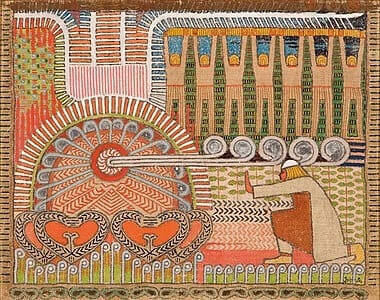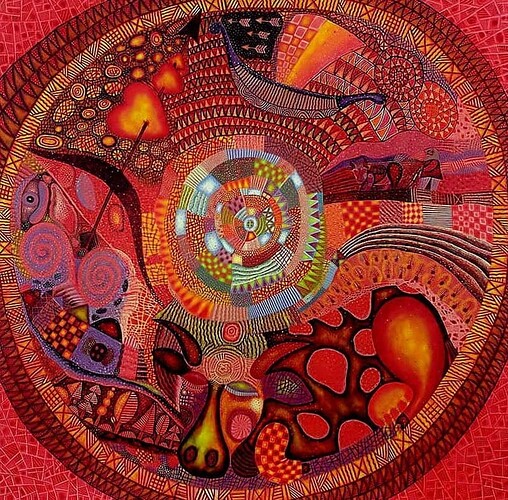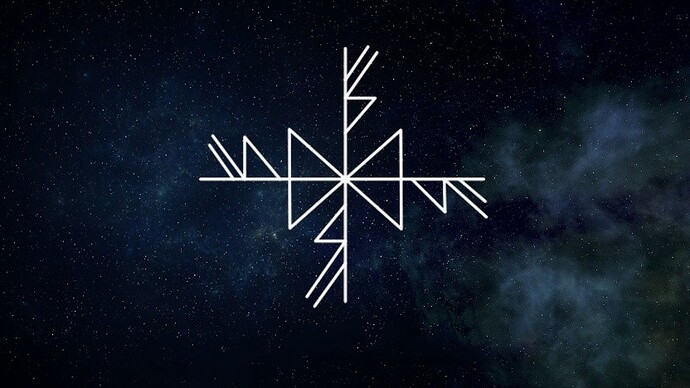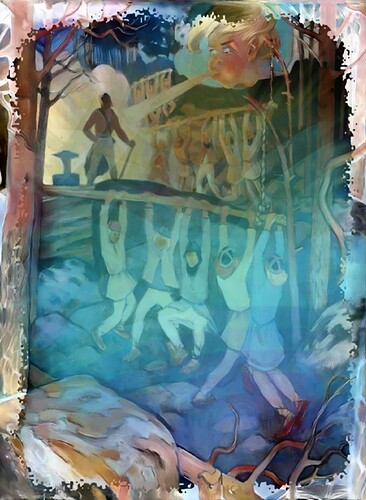Sampo forging, Väinö Blomstedt, 1897
What associations do these pictures evoke for you? Have you ever heard of Sampo Mill (Karelia) or Grotti Mill (Scandinavia)? The Millstones of fortune and prosperity and destiny…
Scandinavian mythology is full of descriptions of amazing things, mysterious objects and artifacts, with the help of which heroes could perform truly magical acts. The Grötti Mill is told to us in detail in an ancient epic. The Scandinavian Song of the Mill (and it is part of the Younger Edda) says that it is a magical object capable of grinding whatever the owner wants. In the magical arts there is a long-term classic money amulet “Grotti’s Millstones” (based on runic formulas), which adjusts the circumstances of human life so that it is more convenient and comfortable to “take” the flow of money, and also reach the desired. Behind the Grotti millstones are runic powers, fueled by two goddesses.
The people of Karelia from the beginning of the first millennium revered the symbol of Sampo. He was depicted in the form of a spinning wheel. Some information about Sampo as understood by the ancient pagan Karelians can be found in Wikipedia: Сámpo (Fin. Sampo) - in the Karelian-Finnish mythology, a unique miracle object, which has magical powers, and is a source of happiness, prosperity and abundance. Also known in Finnish and Ijora folklore is Sampsa Pellervo, the spirit of vegetation and fertility, who is awakened in the spring by the sun - then the bread in the fields begins to rise. The name “Sampsa” is thought to come from the Germanic designation for spring fodder grasses, meaning that Sampsa appears to be the fruit of the Earth awakening in the spring. The question of what is Sampo, and what this object looks like, is still open. In the works of scholars, Sampo is called just an inexhaustible bin of grain, and only later it is given the properties of a mill, to emphasize the process of transformation or conversion.
Attempts to explain intelligibly what Sampo is, were made repeatedly. It has been interpreted as a musical instrument, as a talisman, as a merchant ship, and even as all the land of Karelia and Finland. All that we learn from the text of “Kalevala” about Sampo does not correlate well with the stereotypical image of the mill, entrenched in the public consciousness. And yet, taking into account the depth and versatility of the image, to identify Sampo with the word “mill” seems to be the most compromise and appropriate solution both from the point of view of “functionality” and “appearance”.
Magical objects similar to Sampo are also found in the culture of other peoples and in fiction. If not to go deep into the mythological and philosophical maze, it is easier to imagine Sampo as a source of material wealth, as an object that gives its owner magical benefits. The image of Sampo is multifaceted and at the same time vague, it causes quite certain associations and at the same time refers to the problem of the universe.
The highest good Finns and kindred ancient Korels believed wisdom, which was the knowledge of the innermost forces of nature. This knowledge was the basis of their witchcraft, which consisted mainly in curing illnesses or in defensive magic. Scandinavian legends tell us that the Finns and Korels themselves adopted their witchcraft from a tribe of giants, the distant ancestors of the Nordic peoples, distinguished by their extraordinary wisdom. The peoples of ancient times were the bearers of ancient knowledge received from the gods and encrypted from the “uninitiated” in tales and myths. They were the keepers of the ancestral collective memory of the people and were always revered by their tribesmen. However, all interpretations of the image of Sampo testify to only one thing: the paucity of our understanding of the great pagan book, coming from our ignorance in understanding the great ancient wisdom embedded in it; wisdom not explained by our rationalism, but based on the centuries-old intuitive tradition of understanding the Nature and the World.
The American researcher G. Hancock, having studied all known folklore sources, in which the image of “mill” is present, came to a surprising conclusion that behind this image there is knowledge, describing some global event of cosmic scale and known to numerous cultures of antiquity. This project is also connected with personal destiny.






